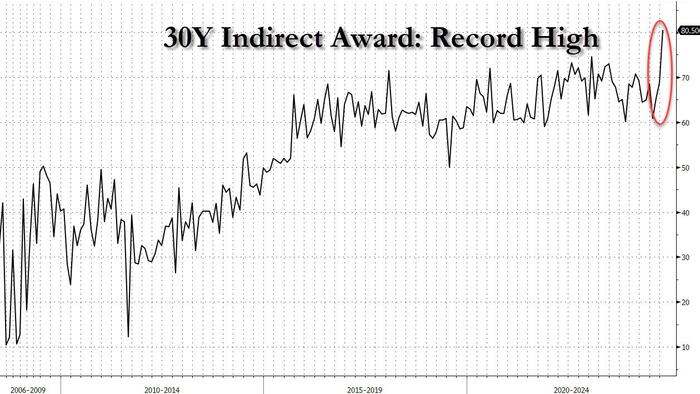The recent 30-year Treasury auction has made waves in the financial markets, standing out markedly against the backdrop of the recent 3-year and 10-year auctions, which were considered subpar and mediocre, respectively. The auction generated heightened interest from investors, leading to a high yield of 4.389%. This figure marks a significant increase from the previous month’s yield of 4.015% and reaches levels not seen since July’s yield of 4.405%. The surprising aspect here was that the auction’s yield was anticipated, as the When Issued (WI) rates were trading at around 4.404%. Consequently, the auction stopped through by 1.5 basis points, representing a notable departure from the trend of tailing, which had characterized past auctions.
An important indicator of the auction’s strength was the bid-to-cover ratio, which surged to 2.50, up from 2.38 in September and representing the highest level since June 2023. This ratio is crucial, as it measures the demand for the bonds being offered. A ratio above two indicates robust investor interest and suggests that many buyers were vying for the available supply. The results indicate a clearly positive sentiment among investors regarding the 30-year debt instruments and their perceived value in the current economic environment.
The internal distribution of the auction results revealed surprising levels of demand, particularly from indirect bidders, which include foreign central banks. Their participation jumped from 68.7% to a remarkable 80.5%, marking an all-time high for this category. This level of demand indicates that overseas investors are increasingly viewing U.S. Treasury bonds as a key component of their investment strategy, potentially as a hedge against uncertainty in other asset classes. In contrast, direct bidders accounted for just 7.6% of the auction, the lowest participation level since 2018, which indicates a shift in the landscape of who is purchasing these long-dated securities.
Dealers, who are typically intermediaries in these bond transactions, were left holding 12.2% of the allocation from this auction, marking the smallest portion since July 2023. This distribution reveals a significant shift toward indirect demand, which highlights a potential decline in the role of domestic direct bidders as market dynamics change. With foreign interest outpacing domestic participation, this auction demonstrates a growing global appetite for U.S. debt.
Market reactions following the auction were telling; yields that were rising to session highs before the auction result receded by approximately 3 basis points post-auction. The unexpected strength of the auction raised questions about the Federal Reserve’s future plans. Although the Fed may pause its easing measures in the near term, the robust demand for long-term U.S. debt suggests that the central bank may eventually have to adopt more aggressive strategies to finance government spending. With policy shifts hinted at by prominent political figures like Kamala Harris and Donald Trump, who propose substantial future spending, market observers are left speculating on the sustainability of such debt levels.
In summary, today’s 30-year auction showcased an unprecedented level of demand, highlighted by the high yield, increased bid-to-cover ratio, and strong foreign interest. These indicators, along with the diminished role of domestic bidders, signal a significant evolution in how U.S. Treasury securities are being perceived in the current financial climate. As yields react to these shifts, the implications of continued robust demand could impact U.S. debt monetization strategies and the broader economic landscape in the years ahead. The auction results present a complex view of investor sentiment, financial strategy, and the ongoing dialogue surrounding government borrowing and fiscal policy.

